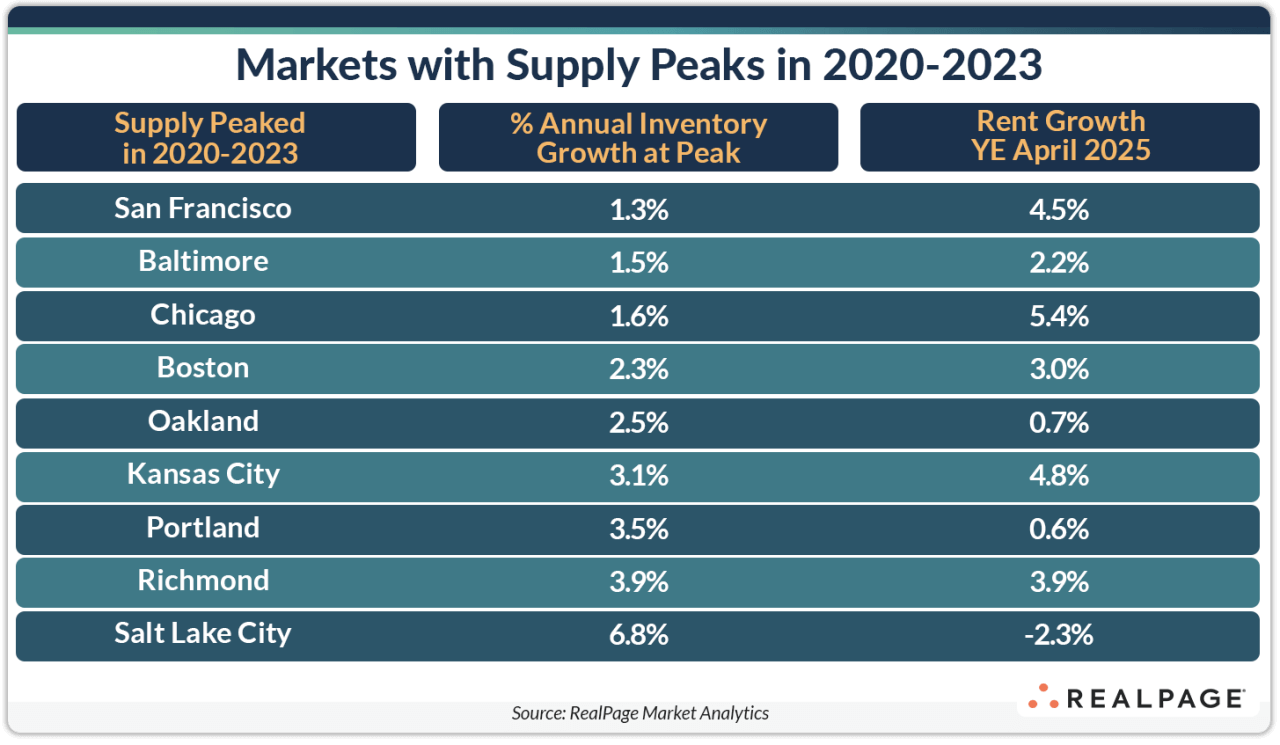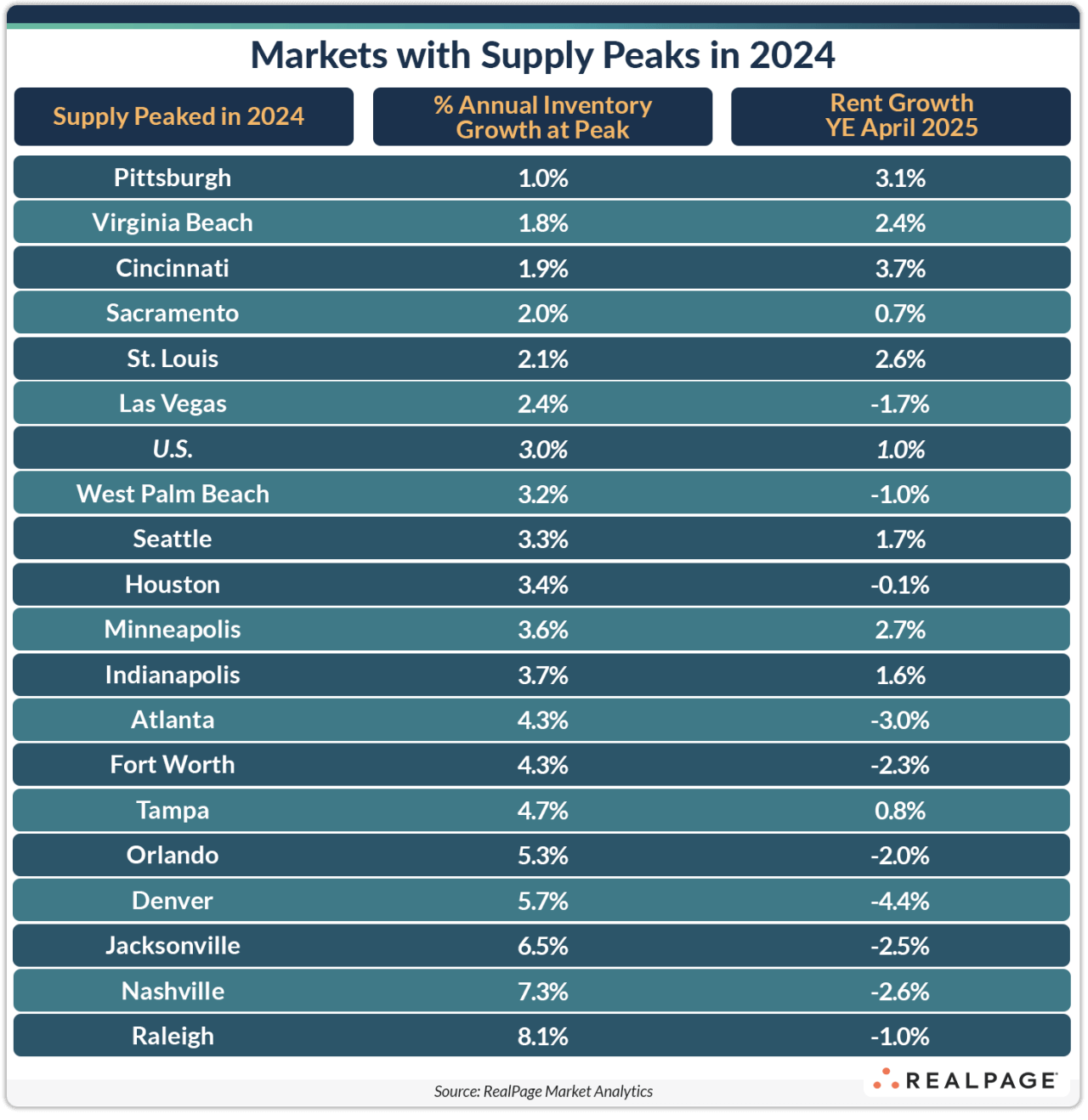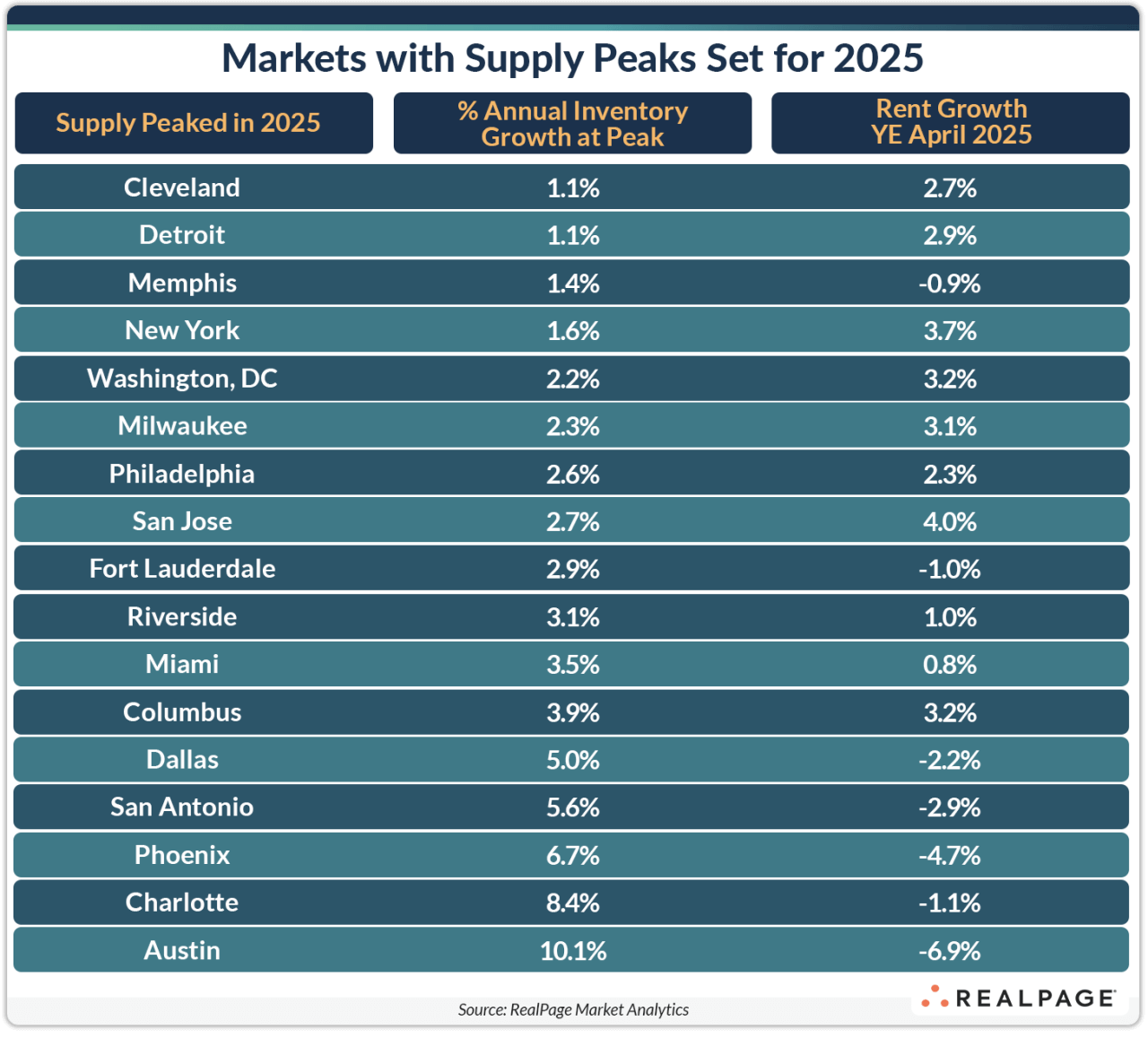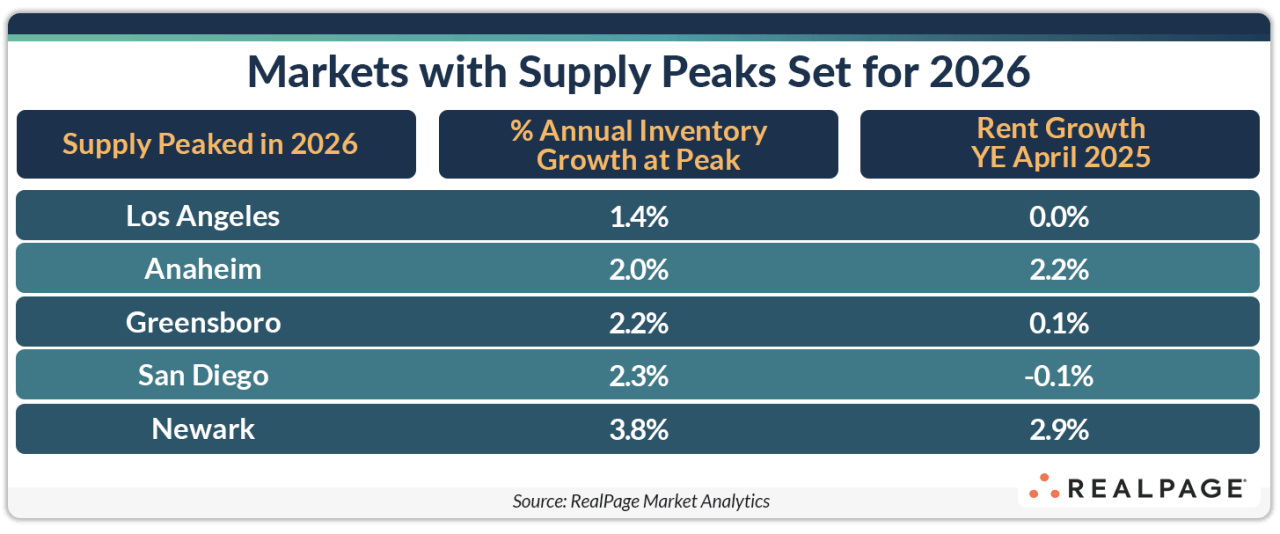Among apartment markets that have surpassed peak supply volumes for the cycle, two combined factors illustrate the market’s current rent performance. Those factors are 1) when the market hit peak supply and 2) how high the supply wave was at the summit.
Markets with Early, Modest Peaks Return to Sizable Rent Growth
Among the nation’s largest 50 apartment markets, nine hit annual supply peaks at least two years ago, in 2020 through 2023, according to data from RealPage Market Analytics. Among those markets, five saw more modest inventory growth of 2.5% or below at their summit, including San Francisco, Baltimore, Chicago, Boston and Oakland. Among these markets with early and soft peaks, most have seen moderate rent growth return as of April 2025, with price increases ranking ahead of the U.S. average of 1%.
Chicago saw supply volumes peak first, in the first half of 2020, and the peak there was modest at 1.6%. With ample time to fill up units, and a modest number of units to fill at its peak, Chicago was the nation’s rent growth leader as of April 2025, with an annual increase of 5.4%. In other words, the earliest market to reach (moderate) peak supply is recording the nation’s highest rent growth about five years later.
Baltimore and Boston were the next to peak, in the second half of 2020, and rent growth was solid at around 2% to 3% in those markets as of April.
Oakland was the only market to see an early low-ratio supply peak that is still seeing annual rent growth behind U.S. norms, at 0.7% in April 2025.
Markets with Early, Sizable Peaks Divided by Region
Markets that saw supply peak in 2020 through 2023, with inventory growth of more than 3% at the summit, include Kansas City, Portland, Richmond and Salt Lake City. West region markets Portland and Salt Lake City are still working through those supply volumes, as evidenced by rent growth behind the U.S. average. In fact, the only market to see early supply peaks that was still seeing rent cuts as of April 2025 was Salt Lake City. The supply peak there was one of the largest nationwide at 6.8% in the second half of 2023.
The two markets in the Midwest and South regions with early and sizable supply peaks were still doing well for rent growth a few years later. Kansas City and Richmond both saw prices grow by at least 4% in the year-ending April 2025. These were some of the biggest rent growth performances nationwide.
Markets with Modest Peaks in 2024 Still Logging Rent Growth
Another 19 of the nation’s largest 50 markets logged cresting supply volumes a bit later in calendar 2024, in the same year the U.S. overall hit its apex. Six of those markets saw inventory growth peak at less than 2.5%, including Pittsburgh, Virginia Beach, Cincinnati, Sacramento, St. Louis and Las Vegas. In most of those markets, price gains registered ahead of the national average in April 2025.
Las Vegas and Sacramento were the exceptions to that rule. Those markets had inventory growth of around 2% at their supply summit in calendar 2024. As of April 2025, Sacramento was logging annual rent growth at a mild 0.7%, while Las Vegas was recording annual price cuts of 1.7%.
Markets with Sizable Peaks in Calendar 2024 Still Struggling in Price Setting
Most markets that saw their supply volumes peak in 2024 logged peak inventory growth over 3%. In turn, most of these markets were seeing rent cuts or posting negligible gains as of April 2025.
What About Markets that Haven’t Peaked?
We can use these performance trends in markets that have already surpassed cresting supply to frame up performance expectations in markets still awaiting peak deliveries.
Several markets are scheduled to hit peak supply this year with modest ratio gains between about 1% and 2%. Those markets include Cleveland, Detroit, Memphis, New York, Washington, DC and Milwaukee. Most of these markets were showing above average annual rent growth in April 2025. The only exception was Memphis, where the 1.4% inventory growth peak is roughly double the volume this market typically sees.
Notable markets still waiting for supply peaks include extreme inventory growth markets Austin, Charlotte, Phoenix, San Antonio and Dallas. These markets will add roughly 5% to 10% to total inventory at their peaks. All of these markets were still seeing deep rent cuts as of April.
Only a handful of large apartment markets are slated to see supply peaks beyond calendar 2025. West Coast markets Los Angeles, Anaheim and San Diego are slated to see inventory growth peaks around 1% to 2% in 2026, and so is South region market Greensboro. Among those, only Anaheim is still seeing notably rent growth as of April 2025.
Newark is the only market set to see big inventory growth of more than 3% in 2026. That market continues to see notable rent increases as of April 2025, but that could change as this market gets closer to that apex.











